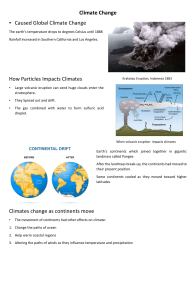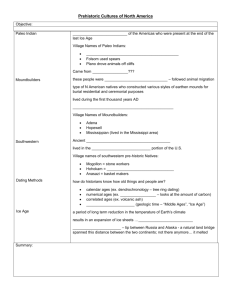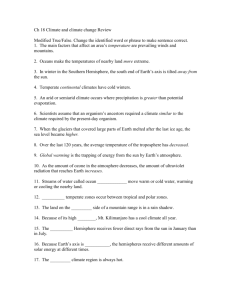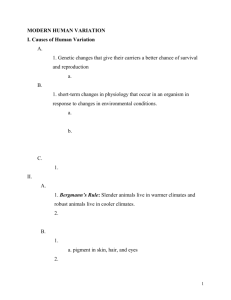Earth Science
advertisement
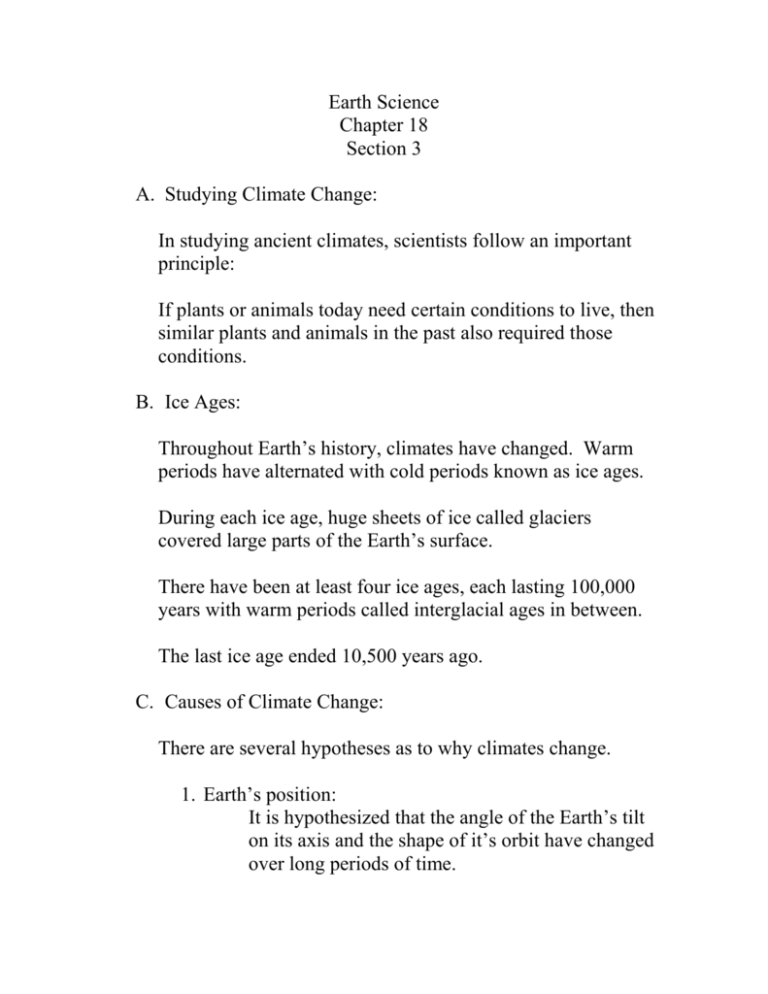
Earth Science Chapter 18 Section 3 A. Studying Climate Change: In studying ancient climates, scientists follow an important principle: If plants or animals today need certain conditions to live, then similar plants and animals in the past also required those conditions. B. Ice Ages: Throughout Earth’s history, climates have changed. Warm periods have alternated with cold periods known as ice ages. During each ice age, huge sheets of ice called glaciers covered large parts of the Earth’s surface. There have been at least four ice ages, each lasting 100,000 years with warm periods called interglacial ages in between. The last ice age ended 10,500 years ago. C. Causes of Climate Change: There are several hypotheses as to why climates change. 1. Earth’s position: It is hypothesized that the angle of the Earth’s tilt on its axis and the shape of it’s orbit have changed over long periods of time. 2. Solar Energy: Short-term changes in climate may have been linked to the number of sunspots (cooler dark areas on the surface of the sun) which increase and decrease over an 11 year cycle. Sunspots could be caused by changes in the sun’s energy output. 3. Movement of the Continents: The break-up of the super continent Pangea and the movement of continents over time changed the locations of land and seas. These changes affected the global patterns of winds and ocean currents, which slowly changed climates.
